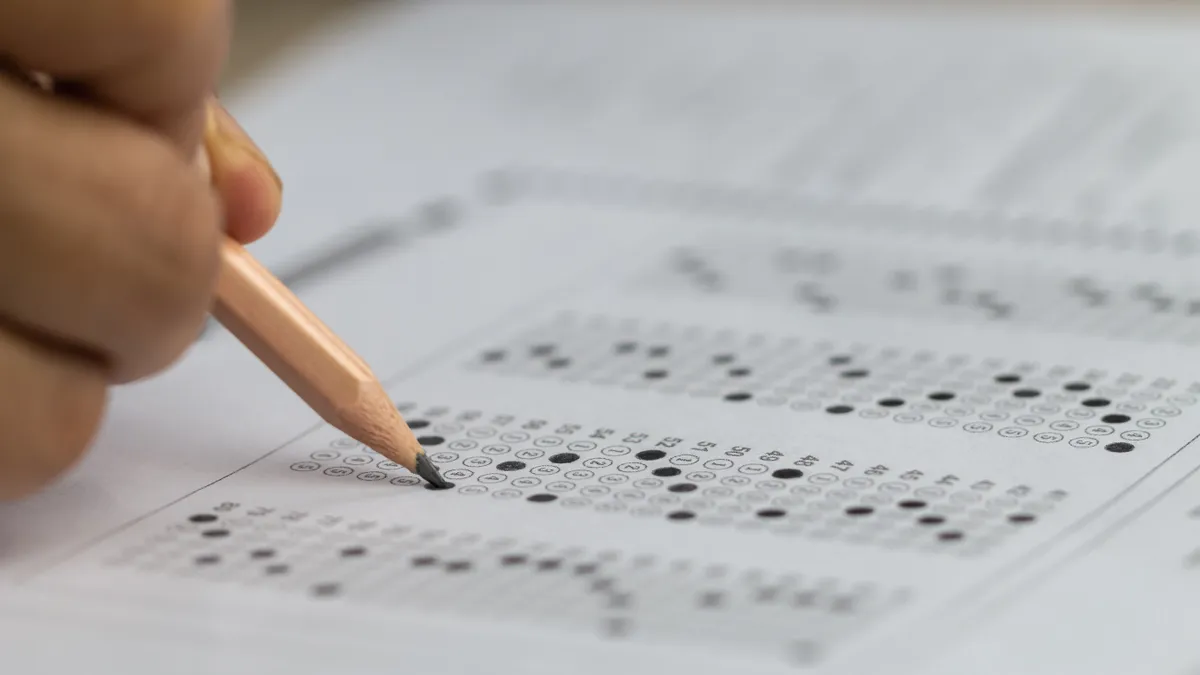Dive Brief:
- State special education offices should avoid setting low expectations for students with disabilities in the wake of disrupted learning and services during the pandemic, warns The Advocacy Institute in a report.
- The nonprofit organization examined State Performance Plans’ Indicator 3B, which measures proficiency levels for children with individualized education programs on state assessments in reading and math for grades 4, 8, and high school.
- State special education offices submitted their six-year performance plans to the U.S. Department of Education earlier this year with improvement targets for proficiency on state assessments. Some state plans only show targets with minimal improvements, while others have more ambitious goals, The Advocacy Institute report said.
Dive Insight:
"The prevalent issue is the level of rigor that individual states decided to bring to this target-setting exercise," said Candace Cortiella, director and founder of The Advocacy Institute, a nonprofit that works to improve the lives of children, youth and adults with disabilities.
States should not be hesitant to set aggressive targets given the impact of the pandemic, she said.
"You're supposed to be thinking about recouping [learning], not lowering your expectations for improvement because of the schools being closed," Cortiella said.
While some students with disabilities thrived during virtual learning, many others struggled to make progress as services were inconsistent, inaccessible or temporarily scaled back.
Some State Performance Plans used assessment results from the 2020-21 school year to set baseline data for the multi-year targets. Although assessment administration was hampered that year due to pandemic-related building closures, absenteeism and shortages of special educators, the bigger concern is the miniscule increments of year-over-year targets for improvement in some state plans, Cortiella said.
The report shares each state's targets and highlights several states it says set minimal goals. In Kansas, for instance, the baseline 4th grade math proficiency from the 2020-21 school year is 13.16%. The target proficiency rate for the 2025-26 school year is 13.76%.
Texas, on the other hand, has a baseline 4th grade math proficiency performance from the 2020-21 school year as 13.25% and a target proficiency rate for the 2025-26 school year as 40%.
The authors of Idaho's state plan shared the comprehensive process education officials and stakeholders underwent to set proficiency targets, including holding small and large group meetings and analyzing past assessment performance. Idaho's 2018-19 baseline 4th grade math proficiency level is 16.13% and sets a target proficiency rate for the 2025-26 school year as 16.89%.
"Stakeholders recognized that Idaho currently has several stresses on its educational system, especially COVID-19 related trauma, staffing loss, and frequent changes in the educational environment. Overall for assessment, stakeholders advocated maintaining targets near the baseline for multiple years, then proceeding with conservative target increases," the plan states.
Each state sets assessment proficiency targets with stakeholder input, and states can adjust their targets over the six-year period. There are several factors that can influence target-setting, including the introduction of a new assessment. Comparing states' proficiency targets is discouraged since each state has its own assessment and definitions or levels of proficiency.
The plans are part of the Education Department's accountability program for federal Individuals with Disabilities Education Act services. In addition to proficiency levels, the plans include data and targets for dropout rates, suspensions and expulsions, preschool social-emotional outcomes, parent involvement, disproportionate representation in specific disability categories, and more.
Cortiella said the bottom line is that state and local education leaders should use federal emergency funding to support rigorous interventions, services and performance targets for students with disabilities so they can recover from pandemic-related setbacks.
"You got all this extra money," Cortiella said, referring to American Rescue Plan funding. "And this is what you think you can turn that into? It's pretty sad.”







 Dive Awards
Dive Awards





